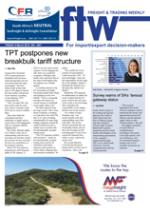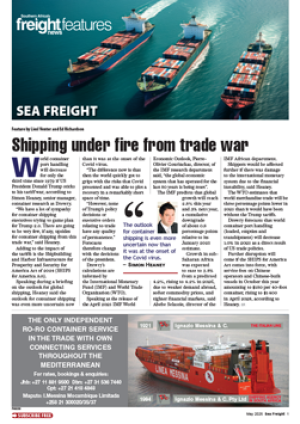Increasingly rigorous
air transport regulations
demand more sophisticated
electronic checking
equipment, requiring
airports to upgrade their
security technology.
“But more cargo
being screened does not
necessarily mean more
airport X-ray machines
being sold,” says Aaron
Chola of HAB International,
one of Africa’s suppliers of
airport X-ray equipment.
“For example, a Rapiscan
632XR X-ray machine has
a larger tunnel size than
say a 628XR machine
and therefore will have
more throughput as it
will accommodate larger
parcels,” said Chola. “But
generally, higher sales (of
X-ray machines) means
more cargo is being moved,”
he added.
“The other ways of
checking cargo are sniffer
dogs, explosives and trace
detection, hand search and
‘maturation,’ where you set
the package aside for 48
hours and hope it doesn’t
blow up. But as regulations
become more stringent
the trend is toward X-ray
screening,” he said.
The push toward tighter
security has come from the
US Transportation Security
Administration (TSA), and
guidelines have further been
stiffened since an explosive
device sent as air cargo
from Yemen to Chicago was
intercepted in Britain in
2010. What usually happens
took place – a new set of
guidelines already being
implemented is now being
accelerated.
“South African cargo
moving directly to the US
must go by US guidelines.
That influences our sales
because now everybody in
the cargo business has to
acquire newer machines
that meet the standards for
screening these parcels,”
said Chola, whose company
services international
airports in southern Africa.
The technology is evolving
to meet new regulations. For
years, the single view system
which shows the interior of a
package from one angle has
been used.
“Now regulations
by TSA, and the EU is
following suit, require a dual
view system – showing two
angles of the same object.
Although these systems
may be higher in price than
the conventional systems,
they come with certain
advantages such as increased
screening throughput which
results in reduced operating
costs,” Chola said.
While some airports in
African countries also use
X-ray screening, they do
not presently need the latest
technology because they
cannot airfreight directly to
the US and EU and usually
fly via South Africa, where
such technology exists or is
being put in place. However,
as these airports expand,
they will also inevitably
have to comply with these
requirements.”
Security push calls for dual view X-ray system
09 Mar 2012 - by James Hall
0 Comments
FTW - 9 Mar 12

09 Mar 2012
09 Mar 2012
09 Mar 2012
09 Mar 2012
09 Mar 2012
09 Mar 2012
09 Mar 2012
09 Mar 2012
09 Mar 2012
Border Beat
Featured Jobs
New
New
